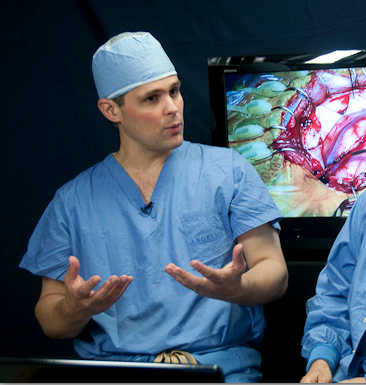
Ed Smith explains the moyamoya operation during a live webcast.
Lindsay Hoshaw contributed to this post.
It’s 7 a.m. and neurosurgeon
Ed Smith, MD, is downing a Diet Coke as he reviews the MRIs of today’s patients. He sprints up a stairwell to greet his first patient in the pre-operating wing.
Thirteen-year-old Maribel Ramos, about to have brain surgery at Boston Children’s Hospital, sits in her bed fidgeting. Smith reassures her about the operation, promises they’ll shave off as little hair as possible, and gets Maribel to crack a smile by telling her he moonlights as a hairdresser. Full story »

Like a seed, a tumor can remain dormant for years. But what's the trigger that causes a tumor to switch from dormancy to aggressive growth? (OpenCage/Flickr)
Believe it or not, you—and I, and everyone around us—quite likely has cancer right now.
While just a third of us will be diagnosed with cancer in our lifetimes, more than 90 percent of us harbor dormant, microscopically small tumors—maybe just a few cells in size—that will never be cause for alarm.
“Most people will live their lives without these tumors growing any larger,” says Randy Watnick, PhD, a researcher in the Vascular Biology Program at Boston Children’s Hospital. “But why? What is the difference between tumors that remain dormant and those destined to grow?”
It’s no small question: As screening and diagnostic technologies improve (allowing us to detect tumors smaller and earlier), the risks of overtreatment rise. That’s fueling a need for better ways to sift potentially dangerous tumors out from ones that will stay quiet. Full story »










